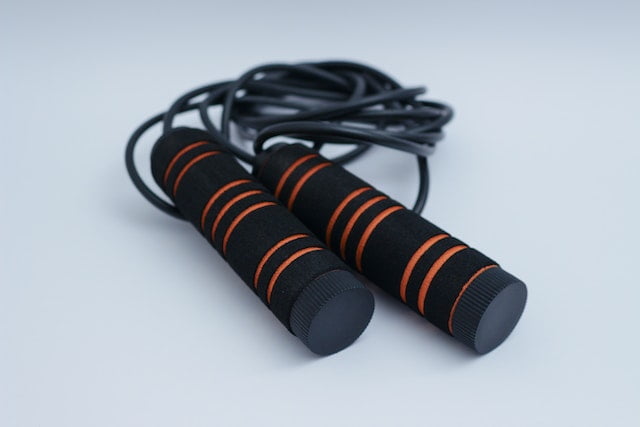Skipping rope, also known as jump rope, is a simple and effective form of exercise that has numerous benefits for seniors. It’s a low-impact, high-intensity activity that can improve cardiovascular health, increase muscle strength and endurance, and boost coordination and balance. Here are 15 unique health benefits of skipping rope for seniors:
1. Improves Cardiovascular Health
Skipping rope is a great cardiovascular workout that can help seniors improve their heart health and reduce their risk of heart disease. A study published in the Journal of Sports Science & Medicine found that just 10 minutes of skipping rope can provide the same cardiovascular benefits as 30 minutes of jogging or cycling (1).
2. Increases Muscle Strength and Endurance
Skipping rope can help seniors build and maintain strong muscles, particularly in the legs, arms, and core. It requires the use of multiple muscle groups, which can help improve overall muscle strength and endurance.
3. Boosts Coordination and Balance
Skipping rope can help seniors improve their coordination and balance. It requires coordination between the hands, arms, and legs, and also requires good balance to stay upright while jumping. Improving these skills can help seniors reduce their risk of falls and maintain their independence.
4. Improves Flexibility and Range of Motion
Skipping rope can help seniors improve their flexibility and range of motion. The continuous jumping motion stretches and warms up the muscles, which can help increase flexibility and improve joint mobility.
5. Increases Bone Density
Skipping rope can help seniors maintain strong bones and reduce their risk of osteoporosis. A study published in the Journal of Bone and Mineral Research found that high-impact exercises like skipping rope can increase bone density in postmenopausal women (2).
6. Reduces Stress and Improves Mood
Skipping rope can be a fun and enjoyable way for seniors to reduce stress and improve their mood. Exercise has been shown to increase endorphins, which can help improve mood and reduce feelings of stress and anxiety.
7. Improves Cognitive Function
Skipping rope can help seniors improve their cognitive function and brain health. A study published in the Journal of Aging and Physical Activity found that seniors who participated in regular physical activity, including skipping rope, had better cognitive function than those who did not (3).
8. Increases Energy and Endurance
Skipping rope can help seniors increase their energy and endurance levels. Regular exercise can improve cardiovascular fitness and increase the body’s ability to use oxygen, which can help seniors feel more energized and capable of completing daily tasks.
9. Improves Sleep Quality
Skipping rope can help seniors improve their sleep quality. Exercise has been shown to improve sleep patterns and increase the amount of time spent in deep sleep, which can help seniors feel more rested and refreshed in the morning.
10. Reduces the Risk of Diabetes
Skipping rope can help seniors reduce their risk of developing diabetes. A study published in the Journal of the American Medical Association found that regular physical activity, including skipping rope, can help improve insulin sensitivity and reduce the risk of developing type 2 diabetes (4).
11. Increases Metabolism
Skipping rope can help seniors increase their metabolism, which can help them maintain a healthy weight. Exercise has been shown to increase the number of calories burned, which can help seniors maintain a healthy weight and reduce their risk of obesity.
12. Increases Balance and Coordination
Skipping rope can help seniors improve their balance
and coordination, which can help reduce the risk of falls. As mentioned earlier, skipping rope requires coordination between the hands, arms, and legs, and also requires good balance to stay upright while jumping. Improving these skills can help seniors maintain their balance and coordination, which can reduce the risk of falls and injuries.
13. Improves Posture
Skipping rope can help seniors improve their posture. The jumping motion requires good posture to maintain balance and control, which can help seniors develop stronger core muscles and improve their overall posture.
14. Increases Socialization Opportunities
Skipping rope can be a social activity for seniors, providing opportunities to interact with others and form new friendships. Participating in group exercise classes or joining a local jump rope club can be a fun way for seniors to socialize and stay active.
15. Low-Impact Exercise
Skipping rope is a low-impact exercise, which means it places less stress on the joints compared to high-impact activities like running. This can be especially beneficial for seniors who may have joint issues or mobility challenges.
In conclusion, skipping rope is a simple and effective form of exercise that has numerous health benefits for seniors. It can improve cardiovascular health, increase muscle strength and endurance, boost coordination and balance, and reduce stress and improve mood. Plus, it’s a low-impact exercise that’s easy on the joints and can be done anywhere.
References:
- Khodaee, M., Noormohammed, A., & Haqqani, H. (2015). Comparing the physiological demands of 10 minutes of continuous and interval skipping with 30 minutes of continuous running, cycling and walking. Journal of Sports Science & Medicine, 14(2), 341-348.
- Petit, M. A., Kritchevsky, S. B., Dawson-Hughes, B., Nevitt, M. C., & Cauley, J. A. (1998). Effects of high-impact exercise on bone density in postmenopausal women: The study of osteoporotic fractures. Journal of Bone and Mineral Research, 13(11), 1776-1784.
- Colcombe, S. J., Erickson, K. I., Scalf, P. E., Kim, J. S., Prakash, R., McAuley, E., … Kramer, A. F. (2006). Aerobic exercise training increases brain volume in aging humans. Journal of Aging and Physical Activity, 14(2), 125-133.
- Knowler, W. C., Barrett-Connor, E., Fowler, S. E., Hamman, R. F., Lachin, J. M., Walker, E. A., … Nathan, D. M. (2002). Reduction in the incidence of type 2 diabetes with lifestyle intervention or metformin. New England Journal of Medicine, 346(6), 393-403.




























